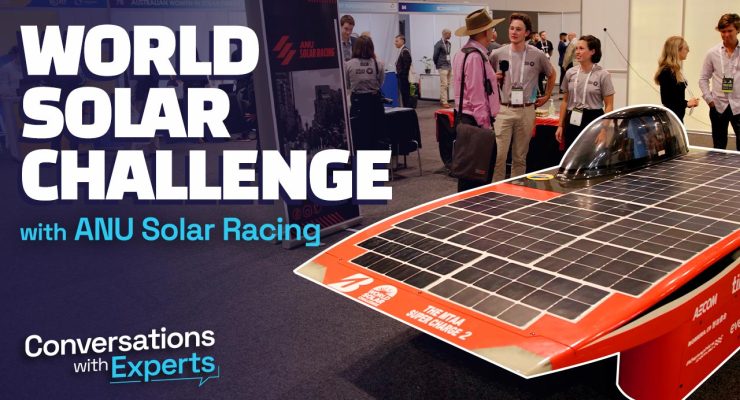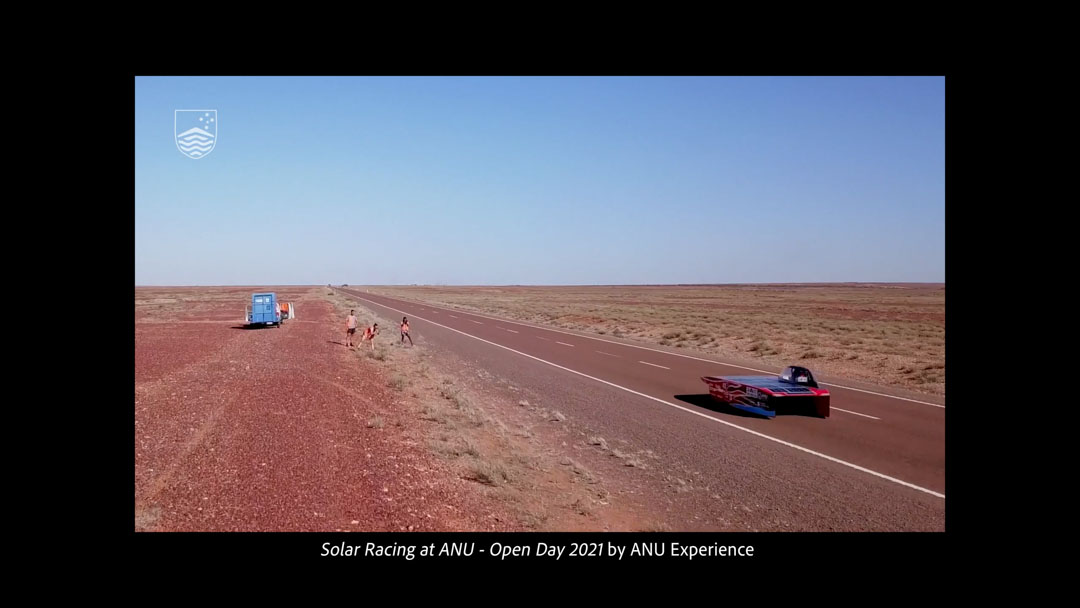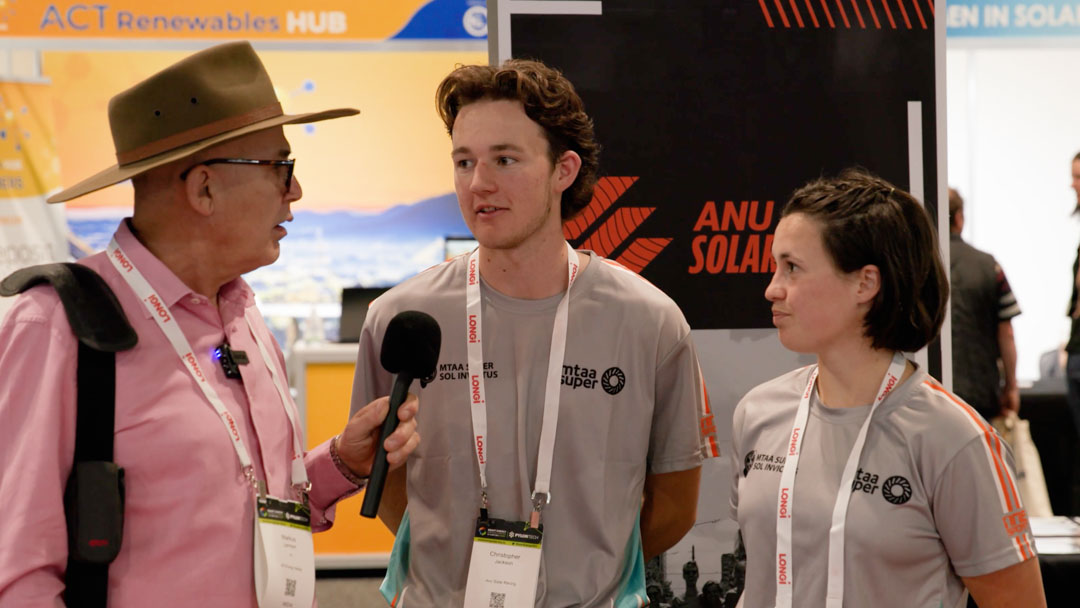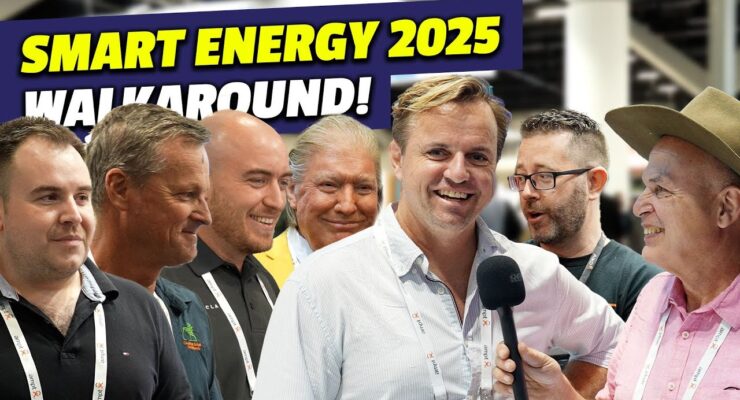
Fast read
In an interview about the World Solar Challenge, Christopher Jackson and Indira Shinn Rees from Australian National University discuss their solar vehicle, built over two years.
They explain how the car works: the power from SunPower cells, encapsulated by Tindo Solar, goes directly to the battery, which then powers the motor. The challenge rewards pride, recognition, and sponsor benefits, rather than monetary prizes.
The vehicle is physically challenging to drive, especially in the hot Australian Outback. Due to Covid, the challenge will be telemetry-based, this time with teams submitting driving data for assessment of efficiency.
The World Solar Challenge – a different beast during Covid
Christopher Jackson: Have you heard of the World Solar Challenge?
Markus Lambert: Yes.
Christopher Jackson: So this was our 2019 car. It took us 2 years to build. But we are a very new team from the Australian National University.
Markus Lambert: Are you really apologising that you can’t win? When you said we’re very new.
Christopher Jackson: No, no, no – I just explain. So the cells are SunPower brand and we go to Tindo Solar to encapsulate them. And we try to be as aerodynamic as we can, that’s the aim of the game.

Markus Lambert Does it go into a battery and then the battery powers the car?
Christopher Jackson: So the power from the cells goes straight to the battery and for the battery it goes straight to the motor. At certain times when we are performing efficiently, the power from the cells can be stored in the battery. And there are certain regulations around both the cells and the battery.
Markus Lambert: So there is like a first, the second or third place, is it like a proper race?
Christopher Jackson: Yeah.
Markus Lambert: And what do you win?
Christopher Jackson: Pride, name recognition, sponsor benefits.
Markus Lambert: Do you get to get like 20 grand at the end?
Christopher Jackson: There’s no monetary benefit. Let me double-check that. Is there any monetary benefit?
Markus Lambert: Yeah, if you win the race, you should get 20 grand or something.
Indira Shinn Rees: It’s just the kudos, that’s the prize.
Markus Lambert: Oh, my God, but it costs you to make it.
Christopher Jackson: True, and it costs our sponsors.
Indira Shinn Rees: Our fantastic sponsors.

How long is one driving the car – which can be very hot?
Markus Lambert: Right. So what’s the average time you’re in there?
Indira Shinn Rees: Three hours.
Markus Lambert: Three hours?
Christopher Jackson: No, aircon.
Indira Shinn Rees: It gets very hot. So safety is really important for us.
Markus Lambert Oh, right, so that the drivers don’t overheat.
Indira Shinn Rees: Yeah, exactly.
Christopher Jackson: And this is out in the Australian Outback, so it’s 40 to 50 degrees. No, aircon. We’ve got one bottle of cold water and that’s all you’ve got.
Markus Lambert: Have you done it?
Christopher Jackson: I have not done it. I am actually too tall to do it. But Indira is one of our drivers for this year.
Indira Shinn Rees: I’ve driven it around Canberra and it’s, it’s not too bad in the Canberra winter.
Markus Lambert: 3 hours, you bake away and you try to be as fast as possible.
Christopher Jackson: Yeah, quite fun.
Is the car easy to drive?
Indira Shinn Rees: In a car that is quite difficult to drive, mind you. It’s got no steering assist, you are very low to the ground. It’s quite hard to see where you go.
Christopher Jackson: You have road trains coming past you in the Outback.
Indira Shinn Rees: You’ve got to work pretty hard.
Christopher Jackson: The World Solar Challenge is going to be digital this year, because of Covid we can not bring all the teams into Australia. So it’s going to be a telemetry-based competition this year.
Markus Lambert: How do you digitally drive a solar car?
Indira Shinn Rees: You physically drive it and then send all the data to the World Solar Challenge and then they’re going to look at all the submitted data and work out which one is the most efficient car.
Markus Lambert: But the Germans will be a bit disadvantaged because there is so much less sun.
Indira Shinn Rees: All that is taken into account, is see how much power you bringing in and sunlight and all of that.
Markus Lambert: I see, so if you bribe the mathematician in charge you could win.
Indira Shinn Rees: Fudge the numbers a little bit, No.
Markus Lambert: We could be very good at that.
Christopher Jackson: I really like your hat, by the way.
Want more energy answers? Visit yourenergyanswers.com for quality energy products, tools and calculators and find your quality local installers.


